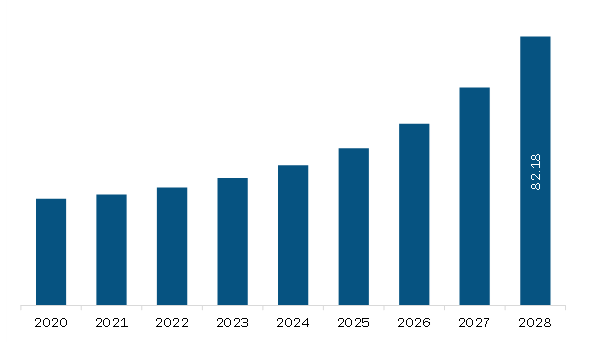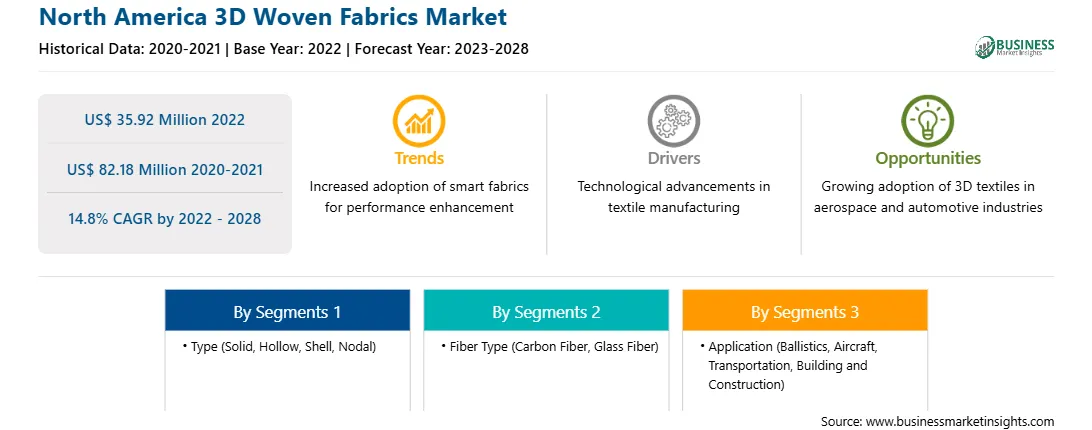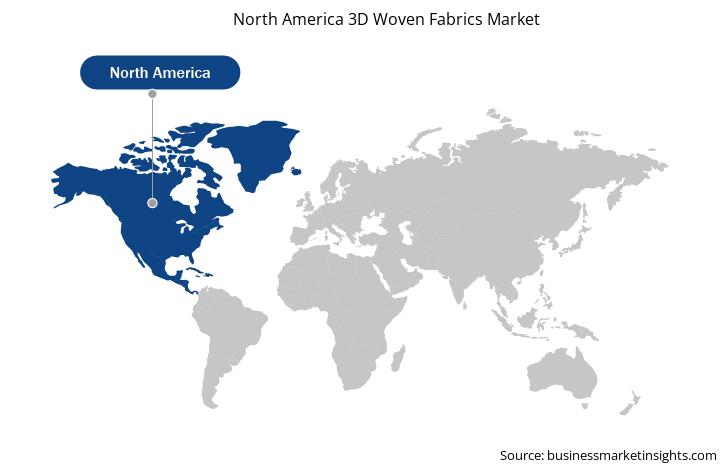Advanced materials are crucial for boosting the fuel economy of modern automobiles while ensuring safety and performance. Substituting cast iron and traditional steel components with lightweight materials such as high-strength 3D Woven Fabrics reduces the weight of a vehicle body and chassis, thereby reducing the fuel consumption of a vehicle. Moreover, 3D Woven Fabrics are suitable for the manufacturing of nonstructural interior components, seat backs, headliners, interior panels, and dashboards.
The utilization of natural fiber-reinforced composites is increasing in aircraft applications due to legislation and regulations forcing manufacturers to use sustainable and recycled materials to manufacture fuel-efficient and lightweight vehicles. In 2020, Dr. Ing. h.c. F. Porsche AG launched Porsche 718 Cayman GT4 Clubsport MR, featuring a car body kit made of natural fiber composite materials made from farmed flax fibers. This natural fiber composite is used to develop front and rear aprons; front spoilers; front and rear lids; mudguards; and diffusers, including aerodynamic fins. In 2022, Mercedes-Benz Group and its development partners, HWA AG and Bcomp Ltd, developed front bumpers engineered from natural fiber composite for Mercedes-AMG GT4 race cars. In 2022, Bayerische Motoren Werke AG and Bcomp Ltd formed a development alliance to utilize renewable types for vehicle components. Furthermore, Bcomp Ltd developed powerRibs and ampliTex reinforcement solutions made from natural composite materials. These solutions have been used in DTM touring cars from BMW M Motorsport to substitute selected carbon fiber-reinforced plastic components. Therefore, the increasing use of 3D Woven Fabrics in the aircraft industry drives the market growth. Also, the rising adoption of electric vehicles (EVs) drives the North America 3D Woven Fabrics market.
The region holds extensive growth opportunities for the 3D woven fabrics market owing to the growing utilization of advanced textiles such as 3D woven fabrics in end-use industries such as aerospace, transportation, building and construction, and aircraft. 3D woven fabrics are used in flanges, turbine rotors, beams, ballistic protection, high-performance sports products, and commercial products such as body armors, parachutes, sail cloths, and military helmets. As 3D woven fabric exhibits design versatility, fuel efficiency, impact resistance, and cost-effectiveness, it is used as an innovative alternative to metals in aerospace applications. According to the article published by the National Aeronautics and Space Administration (NASA) in 2020, NASA utilizes 3D woven materials to develop Woven Thermal Protection Systems (W-TPS), which consist of mechanically deployable aeroshells made of 3D woven carbon fabric.

Strategic insights for the North America 3D Woven Fabrics provides data-driven analysis of the industry landscape, including current trends, key players, and regional nuances. These insights offer actionable recommendations, enabling readers to differentiate themselves from competitors by identifying untapped segments or developing unique value propositions. Leveraging data analytics, these insights help industry players anticipate the market shifts, whether investors, manufacturers, or other stakeholders. A future-oriented perspective is essential, helping stakeholders anticipate market shifts and position themselves for long-term success in this dynamic region. Ultimately, effective strategic insights empower readers to make informed decisions that drive profitability and achieve their business objectives within the market.

| Report Attribute | Details |
|---|---|
| Market size in 2022 | US$ 35.92 Million |
| Market Size by 2028 | US$ 82.18 Million |
| Global CAGR (2022 - 2028) | 14.8% |
| Historical Data | 2020-2021 |
| Forecast period | 2023-2028 |
| Segments Covered |
By Type
|
| Regions and Countries Covered | North America
|
| Market leaders and key company profiles |
The geographic scope of the North America 3D Woven Fabrics refers to the specific areas in which a business operates and competes. Understanding local distinctions, such as diverse consumer preferences (e.g., demand for specific plug types or battery backup durations), varying economic conditions, and regulatory environments, is crucial for tailoring strategies to specific markets. Businesses can expand their reach by identifying underserved areas or adapting their offerings to meet local demands. A clear market focus allows for more effective resource allocation, targeted marketing campaigns, and better positioning against local competitors, ultimately driving growth in those targeted areas.

The North America 3D woven fabrics market is segmented into type, fiber type, application, and country.
Based on type, the North America 3D woven fabrics market is segmented into solid, hollow, shell, and nodal. The solid segment held the largest share of the North America 3D woven fabrics market in 2022.
Based on fiber type , the North America 3D woven fabrics market is segmented into carbon fiber, glass fiber, and others. The carbon fiber segment held the largest share of the North America 3D woven fabrics market in 2022.
Based on application, the North America 3D woven fabrics market is segmented into ballistics, aircraft, transportation, building and construction, and others. The aircraft segment held a larger share of the North America 3D woven fabrics market in 2022.
Based on country, the North America 3D woven fabrics market is segmented into the US, Canada, and Mexico. The US dominated the share of the North America 3D woven fabrics market in 2022.
3D Weaving SaRL; Sigmatex Ltd; TEAM Inc; Tex Tech Industries Inc; and Textum OPCO LLC are the leading companies operating in the North America 3D woven fabrics market.
The North America 3D Woven Fabrics Market is valued at US$ 35.92 Million in 2022, it is projected to reach US$ 82.18 Million by 2028.
As per our report North America 3D Woven Fabrics Market, the market size is valued at US$ 35.92 Million in 2022, projecting it to reach US$ 82.18 Million by 2028. This translates to a CAGR of approximately 14.8% during the forecast period.
The North America 3D Woven Fabrics Market report typically cover these key segments-
The historic period, base year, and forecast period can vary slightly depending on the specific market research report. However, for the North America 3D Woven Fabrics Market report:
The North America 3D Woven Fabrics Market is populated by several key players, each contributing to its growth and innovation. Some of the major players include:
The North America 3D Woven Fabrics Market report is valuable for diverse stakeholders, including:
Essentially, anyone involved in or considering involvement in the North America 3D Woven Fabrics Market value chain can benefit from the information contained in a comprehensive market report.